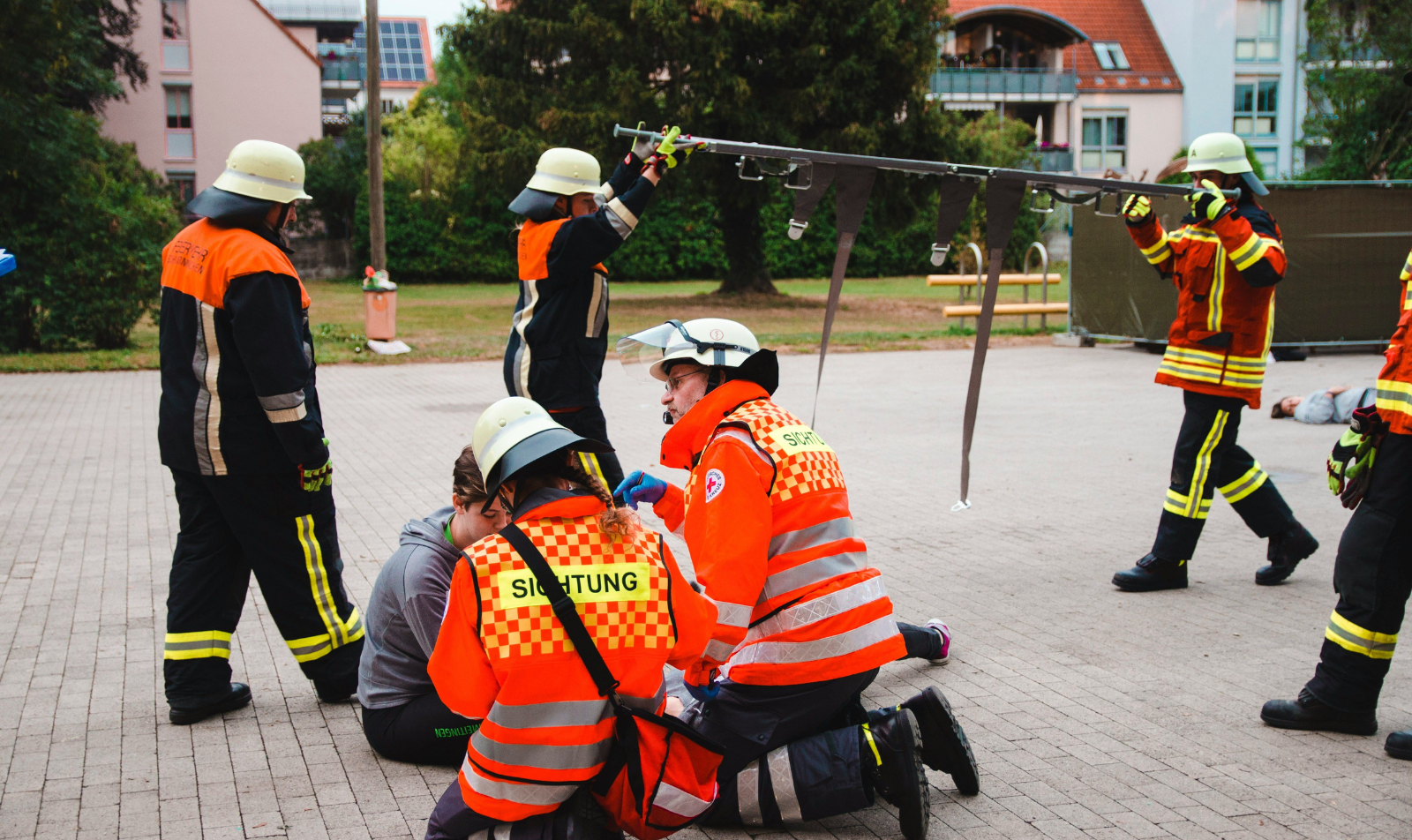Have you ever wondered what it’s like to swap the NHS wards for a hospital in Japan? To enter a system where medicine is shaped by efficiency, hierarchy, and culture in ways that feel both familiar and completely new. This is exactly what an elective in Japan offers, along with the opportunity to sample authentic sushi and see neon cityscapes and ancient temples.
To find out what the experience is really like for UK medical students, I spoke with a recent graduate, Dr. Harshita Bagul, who spent their 4th year elective in Tokyo. Based on her story and my own personal experience growing up there, I have compiled the key information and insights to help anyone considering it.
 Why Japan?
Why Japan?
- Learn in a high-performing system: Experience an opportunity to see how medicine is practised in a country where high standards of care and innovation go hand in hand and have helped it achieve a life expectancy of 84.7 years – one of the highest in the world.
- Experience advanced medical technology: With some of the highest numbers of MRI and CT scanners per capita in the world, and widespread use of robotic surgery such as the Da Vinci system and Japan’s own Hinotori platform. Students can also encounter technologies like proton beam therapy and AI-assisted endoscopy that remain less common in the UK.
- Immerse yourself in Japanese culture: It is your chance to discover ancient temples in places like Kyoto and Nara, and participate in seasonal festivals, such as matsuris, alongside local people.
- Enjoy everyday adventures: Experience everything from bustling city districts like Shinjuku or Harajuku (Tokyo) to trying foods from onigiri to ramen.
- Future Career: If you ever decide to move or work in Japan, this experience gives you an early understanding of how hospitals operate there. It also leads to connections in academic departments, research groups, or exchange programs, if you wish to pursue postgraduate research, PhDs, or collaborative studies in biomedical engineering, oncology, and robotic surgery, which are major fields in the country.
 Finding the placement
Finding the placement
When it comes to arranging the elective, it is an entirely self-directed process, according to Harshita. “You need to take initiative to organise everything, from finding hospitals that offer international electives in English to applying directly online,” she said. Many Japanese universities offer these programs, and some popular choices include Jikei, Toho, Osaka, and Juntendo University. For a 4-week elective, you can choose and tailor your placement based on your speciality of interest. Harshita was interested in paediatric and upper GI surgery, so she spent two weeks in each speciality at Juntendo University Hospital.
There’s also great value in creating your own elective through networking. Building professional connections can open doors that formal applications might not. Start by reaching out to doctors in Japan – LinkedIn is an excellent platform for this. Show genuine interest in their work, engage thoughtfully with their posts, and express your desire to learn from their experience. Once you’ve established a rapport, politely inquire about possible elective opportunities. Even if they can’t accommodate you directly, ask if they could recommend a colleague or another hospital that might. The key is persistence – don’t be discouraged by initial setbacks. Stay proactive, keep exploring different avenues, and demonstrate your enthusiasm; determination often leads to unexpected opportunities.
 Securing the placement
Securing the placement
Most Japanese universities have earlier elective application deadlines than UK institutions. “It is advised to prepare all the documents and apply several months in advance,” said Harshita. The application process is entirely online and should be completed on the desired university’s website, which clearly outlines all the necessary instructions, including the required titles for the attachments.
- Application period: Roughly 6 months before the intended start date
- Tuition fee: Most universities offer free electives, but do not cover living and administrative costs.
- Hospital application form, which generally includes:
- Personal and medical school details.
- Departments you wish to join and preferred dates for them.
- Motivation and cases you would like to experience in the department.
- Vaccination and health records.
- Academic achievements and history.
- Employment history.
- Language skills.
- Choosing a speciality: Review the openings and department guide to ensure you meet any additional special requirements for it, and that space is available.
- Other common requirements include:
- Passport copy and personal photo.
- IELTS or TOEFL scores for applicants from countries where English is not the official language.
- JLPT (Japanese language proficiency test) score, if taken.
- Medical school entry letter and academic transcripts.
- Recommendation letter.
- Accommodation: Some University hospitals may provide accommodation you must pay for, but most expect students to make their own arrangements. Students typically stay in monthly apartments, guesthouses, or university-recommended dorms if available. Most students secure accommodation within a 20 to 30 minute commute of the hospital, using the university’s housing guide or previous recommendations.
Once your placement is confirmed and you receive the acceptance letter, the next step is to sort out the practicalities before travelling, which includes health insurance, housing close to the university, and checking all the available facilities nearby. “The paperwork can feel overwhelming, but if you start early and stay organised, it’s straightforward and manageable,” Harshita advised.
 Timeline
Timeline
| Stage | Timeframe (for Aug 2026) |
|---|---|
| Research the Universties/Hospitals and the elective programmes offered across Japan | Oct-Dec 2025 |
| Prepare Documents (transcripts, vaccination records, visa requirements, recommendation letter, personal statement and more) | Nov-Jan 2025 |
| Submit application through university portal or by email | Jan-April 2026 (Depending on the university) |
| Receive confirmation letter | April-May 2026 |
| Apply for Visa (if needed): For non-UK citizens, apply for temporary visitor visa at the Japanese consulate | May 2026 |
| Book Accommodation and flights | May-Jun 2026 |
| Purchase travel and medical insurance, prepare paperwork and emergency contacts. | Jun-July 2026 |
| Final Checks: confirm placement details, dress code (white coat and formal wear) and documents. | Jun-July 2026 |
| Start the Elective | July-Aug 2026 |
 About the placement
About the placement
Most universities in Japan offer a clinical observership, providing the opportunity to observe outpatient clinics, attend ward rounds with doctors, and, most importantly, observe surgeries performed with advanced technology. During Harshita’s time at Juntendo University Hospital, she observed procedures such as orchidopexy, oesophageal and gastric bypass for cancer, and repair of an imperforate anus. She also saw robotic systems such as the Da Vinci. “It was an incredible and insightful experience to see those operations up close as they further deepened and inspired my passion for surgery,” she said.
When asked about the work culture and daily life, she talked about how everything was highly organised and systematic. Although it was mainly an observational experience, she had the opportunity to observe numerous surgeries, gain deeper insight into how Japanese healthcare operates, and interact with doctors, nurses, and other medical professionals. There is also the dreamy advantage of touring around and visiting different places in Japan outside work hours and on the weekend. However, some of the difficulties she faced included the language barrier, as not all staff members spoke English, and the work culture felt somewhat hierarchical.
 A day in the life
A day in the life
Days at Juntendo began early, usually around 8 or 9 a.m., with a morning conference or ward round led by senior consultants. Observers then joined clinics, operating theatres, or departmental teaching sessions, depending on the day’s schedule. The day wrapped up around 4 p.m., leaving evenings free to explore Tokyo. The hospital’s central location in Bunkyō City is a short 5-7 minute walk from Ochanomizu Station, making commuting simple, with many students staying within a 20–30 minute train ride. Other nearby stations are Shin-Ochanomizu or Hongo-sanchome.
The cost of living is around ¥120,000–¥150,000 (£600–£750) per month, including accommodation, meals, and transport. Affordable food options are everywhere, from university cafeterias to 500-yen lunch sets and convenience-store bento.
 Thinking of Working in Japan?
Thinking of Working in Japan?
To practise medicine in Japan, your degree must first be verified by the Ministry of Education, Culture, Sports, Science and Technology (MEXT) to confirm equivalence with a Japanese MBBS-level qualification. Then, you will have to pass the Japanese National Medical Examination and obtain a licence from the Ministry of Health, Labour and Welfare. The exam is conducted entirely in Japanese, so you’ll need to have native-level fluency, equivalent to Japanese Language Proficiency Test N1 level (JLPT), ****which is a Japanese exam for foreigners. The entire process is quite tricky and lengthy, so most international doctors start by working in research, observership, or academic assistant roles at major hospitals or universities (like Juntendo or Keio) to gain medical Japanese fluency, publish research, and establish professional relationships before pursuing full licensure.
Another pathway to practise medicine in Japan is through a handful of international hospitals and bilingual clinics, such as St. Luke’s International Hospital, Tokyo Midtown Medical Centre, and Tokyo Medical and Surgical Clinic, as they can employ foreign-trained doctors under collaborative or sponsored arrangements with embassies (for treating their nationals), universities or corporations. The doctor would focus on the English-speaking patients, international health programmes, or academic projects. Clinical duties are often carried out under the supervision of a Japanese-licensed physician, allowing the foreign doctor to consult, perform check-ups, or assist in inpatient care while adhering to local licensing rules.
 Final Thoughts
Final Thoughts
“For me, the elective in Japan was a great experience. I learnt so much in the hospital and at the same time had the chance to explore the country. People were incredibly nice and helpful, which made everything easier,” she said. Her advice for future students? Go in prepared and learn a few simple Japanese phrases to make your daily life easier. Tools like Google Translate can help bridge the language gap and make interactions with staff easier. I believe the combination of clinical exposure, cultural immersion, and the kindness of those she met made the elective one of the most rewarding parts of medical school.
Thanks for reading. If you have any comments or suggestions, please feel free to share them below and we’ll get back to you as soon as we can!
Reviewed by Dr. Harshita Bagul
UK medical graduate, who completed her 4th-year elective in paediatric and upper GI surgery at Juntendo University Hospital, Tokyo.





